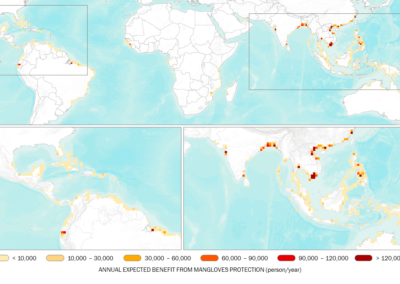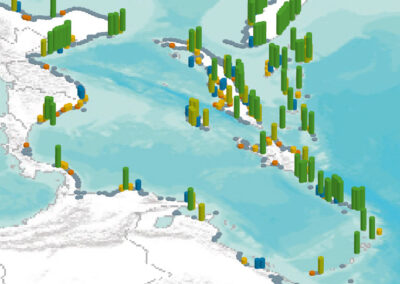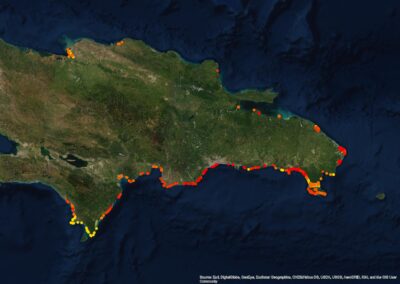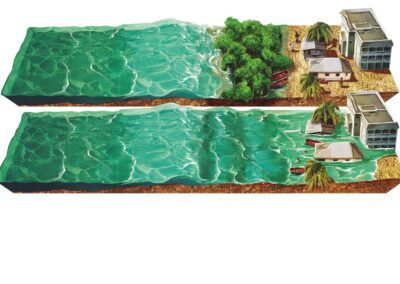MANGROVES
“Integrating the value of ecosystems into planning to promote their conservation.”


MANGROVES
2019 – 2020
-
Mangroves act as natural defenses that protect people and property from flooding, reducing coastal risk. However, these protection benefits are often not fully taken into account in policy and management decisions, and mangroves continue to be lost.
This work contributed to a rigorous assessment of the social and economic benefits of coastal protection provided by mangroves. By identifying where these natural coastal defenses provide the greatest flood reduction benefits, this work contributes to adaptation, sustainable development and environmental restoration policies.
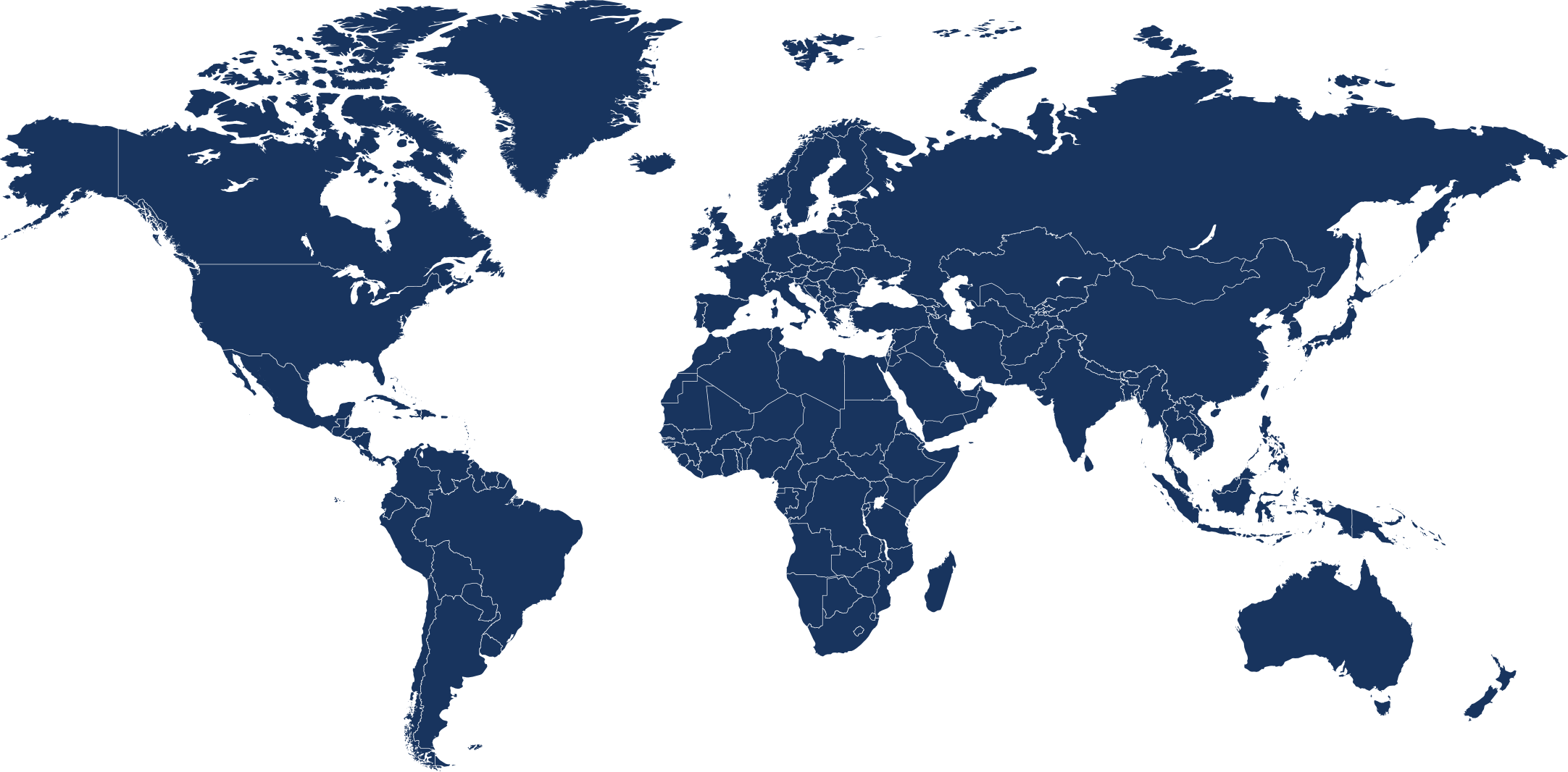
MANGROVES
2019 – 2020
Mangroves act as natural defenses that protect people and property from flooding, reducing coastal risk. However, these protection benefits are often not fully taken into account in policy and management decisions, and mangroves continue to be lost.
This work contributed to a rigorous assessment of the social and economic benefits of coastal protection provided by mangroves. By identifying where these natural coastal defenses provide the greatest flood reduction benefits, this work contributes to adaptation, sustainable development and environmental restoration policies.


CONTEXT
-
- REGION, COUNTRY: Global
- CLIENT: UC SC – University of California, Santa Cruz (USA)
- SOURCE OF FINANCING: WB – World Bank Group
- SCOPE: International

WHAT HAS MADE THIS PROJECT UNIQUE?
-
- Supporting evidence-based decision making and innovation for contribution to the SDGs.
- Design of multidisciplinary, integrated and unique solutions to address the complexity of socio-ecological systems associated with water and ensure their resilience.
- Capacity building and knowledge transfer to new generations of professionals (research and management personnel) to promote the progress of science and society.
- Cooperation, alliances and partnerships for sustainability, as an interface between academic and business, local and global, public and private agents.
- Innovative management model, capable of generating a return for society that triples the public investment it receives and guarantees self-financing of over 70%.

HOW HAS IT ALIGNED WITH OUR MISSION AND VISION?
-
- Provision of sustainable innovative solutions based on scientific excellence.
- Knowledge transfer.
- Development of technical tools and procedures that facilitate decision making on planning, integrated management of social-ecological systems and landscape regulation.

WHAT LESSONS HAVE BEEN LEARNED?
-
- The combination of rigorous methods used in engineering and economics to show how effective mangroves are as natural protection.
- Economic quantification of protection services serves to raise awareness among decision-makers of the importance of these coastal ecosystems.
- The results obtained can serve as a basis for adaptation and risk reduction strategies, including the development of tools that use the benefits of mangrove risk reduction to pay for mangrove restoration.
- Mangrove restoration can be a very cost-effective risk reduction strategy.
- These results can serve as a basis for the development of innovative financing tools that use the benefits of reduced mangrove risk to pay for mangrove restoration.
- Coastal engineering professionals should evaluate the cost-effectiveness of natural defenses when considering coastal protection alternatives, as these are often more cost-effective than gray solutions (man-made structures) for risk reduction.

WHAT HAS BEEN THE IMPACT OF THE PROJECT?
-
- Use of a rigorous integrated hydrodynamic approach for the valuation of mangrove flood protection services and the identification of mangroves that provide the greatest benefits.
- Development of a multidisciplinary work that has included research personnel from different disciplines to parameterize the characteristics of mangrove forests and their evolution over time, and then relate them to the coastal protection service provided.
- Publication of 4 high impact articles in prestigious scientific journals such as Scientific Reports or PlosOne.

WHY HAS IT BEEN SUCH A SUCCESS?
-
- IHCantabria, The Nature Conservancy, and Bündnis Entwicklung Hilft published a study providing a global quantitative assessment of the services provided by mangroves as natural breakwaters, reducing disaster risk to people and property in coastal areas around the world.
- The results of the study demonstrated the value of mangroves as natural coastal defenses at global, national and local scales, which can influence incentives for mangrove conservation and restoration in development, climate adaptation, disaster risk reduction and insurance.

CONTEXT
CLIENT: UC SC – University of California, Santa Cruz (USA)
SOURCE OF FINANCING: WB – World Bank Group
SCOPE: International

WHAT HAS MADE THIS PROJECT UNIQUE?

HOW HAS IT ALIGNED WITH OUR MISSION AND VISION?

WHAT LESSONS HAVE BEEN LEARNED?

WHAT HAS BEEN THE IMPACT OF THE PROJECT?

WHY HAS IT BEEN SUCH A SUCCESS?
PARTICIPATING ENTITIES
TNC – The Nature Conservancy (United States)
PARTICIPATING ENTITIES
– TNC – The Nature Conservancy (United States)

